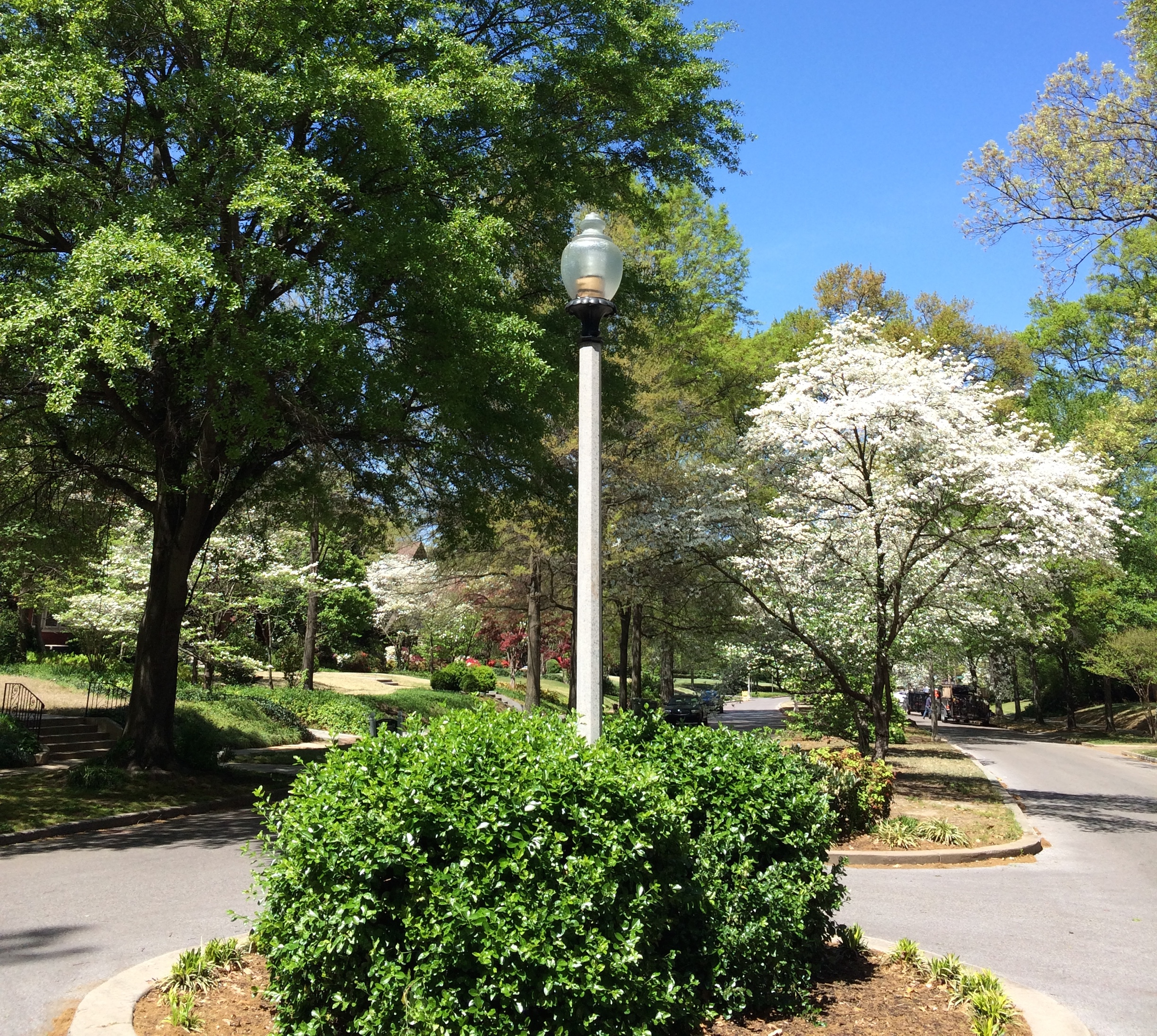This month the Central Gardens newsletter explores the creation of the neighborhood association, from the original motivations to its ultimate formation in 1967, and its efforts to improve and take Central Gardens into the swinging 70s and beyond.
(a version of this article will appear in the Central Gardens Neighborhood Association February newsletter)
Central Gardens – A Neighborhood Association Born Out Of Activism
Like other U.S. cities during the post-war era, in the late 1950s and early 60s a great portion of Memphis’ population was hopping in their shiny new automobiles and migrating away from the city’s downtown core. This was the era that gave us the unenviable term “White Flight.” In Memphis this migration – many have called it an exodus – would eventually establish sprawling suburban neighborhoods in East Memphis, Cordova, Germantown and Collierville. Increases in inner city crime, and the fears permeated by the unrest of the Civil Rights Movement and the 1968 murder of Dr. Martin Luther King, Jr. on the balcony of the Lorraine Motel only exacerbated the migration, and would eventually turn parts of Downtown into a ghost town. And as combined with vast federal subsidies going toward highway construction and slum clearance, would bring bulldozers and devastation to block after block of African American neighborhoods directly south of Beale under the guise of another unsavory term of the era: “urban renewal.”
In between Downtown and East Memphis, Midtown and Central Gardens were facing turning points, as “there were still many skeptics questioning the viability and safety of an old midtown neighborhood in a city” where the population and primary tax base continued to move east. (Stories of a Neighborhood)
It was a time of transition, as new and young “pioneering” couples began to gamble on home purchases and renovations in a part of town that, though aging, had not suffered the ravages of decay and urban blight seen in other parts of Memphis. Here, most of the Crump-era mansions and estates were still standing, but were increasingly seeing old Memphis money being replaced by young families seeing bargain prices and seeking a sense of community. And yet there were looming threats, from banks that envisioned a future of boarding houses and duplexes, and developers that were planning high-rise apartments.
“Residents became increasingly anxious about threats of encroachment, particularly since the neighborhood was zoned to allow such high density development. The ‘straw that broke the camel’s back’ … came in 1966, not from a high rise project, but from a threat to destroy the beauty of Belvedere Boulevard: Councilman Pete Sisson proposed removing the median strip from Belvedere to help alleviate traffic congestion.” (Stories of a Neighborhood)

The late 60s was a time of brewing activism and adventure in Midtown, Memphis, as the fight to protect nearby Overton Park from the development of Interstate 40 would be heating up soon, and when a group of investors began looking at the old store fronts at the corner of Madison and Cooper with dreams of turning it into a new town square and starting the first TGI Fridays outside of New York’s Times Square.
In that spirit neighborhood residents – led by Drew Canale, Joe Tagg, Jr., L.K. Thompson, Jr., Hallam Boyd, and Mrs. Robert Shafer – rallied to defeat the plan to defile Belvedere’s pastoral median. Yet more proposals for undesirable development on the heals of that defeat served as a wake-up call to the neighborhood.
“At the urging of resident and attorney Walter Armstrong, a core group of residents, including John Thomason, Katherine Smythe, Peyton Rhodes, and Janie Fort, formed the Central Gardens Area Association to oppose commercial ventures, high-rise apartments on Central, and the construction of duplex and townhouses. Jean Marsh was the first president of the association named for its proximity to Central Avenue and its similarities to New Orleans’ famous Garden District. This was one of the first neighborhood associations in Memphis…” (Stories of a Neighborhood)

However establishing a neighborhood association alone proved to be inadequate in fighting off further development; in the early 70s the city continued to be in favor of zoning for duplexes. This prompted the association in 1975 to take legislative action to “preserve the small town, single-family spirit and integrity of the neighborhood. They organized once more to change the zoning from duplex to single-family. Residents raised $10,000 to hire William S. Pollard Consultants, Inc. to produce an improvement plan for the neighborhood which addressed rezoning.” (Stories of a Neighborhood)
Reminiscent of today’s efforts to make Memphis neighborhoods more pedestrian- and bicycle-friendly, other improvements of the 1975 plan called for bicycle lanes, a walkway system, “handicap ramps at intersections, new street signs and entrance gates, new parks and a new educational center.”
Despite the obvious benefits of such improvements, there were dissenters who threatened to keep Midtown and Central Gardens from becoming what it is today. Also reminiscent of today’s efforts, not every resident saw the benefits of these plans; rather, a few individuals argued that improvements and zoning changes would price out those with moderate incomes, and that Midtown should continue to be appealing to working people. Their arguments and Pollard’s improvement plan would be taken to the City Council and the Planning Commission for a hearing in November, 1975, and would prove a turning point in the burgeoning renaissance of Central Gardens.
Read Part II to learn about that November ’75 decision.
2017 marks the 50th anniversary of the Central Gardens Neighborhood Association. And for this year’s newsletters the neighborhood is celebrating by exploring the history of this great neighborhood, and highlighting the articles with excerpts from Barbara Viser’s Central Gardens – Stories of a Neighborhood.
Central Gardens can be followed at its website Central Gardens and on Instragram @centralgardens. Copies of Ms. Viser’s Stories of a Neighborhood can be purchased at Central Gardens Shop

